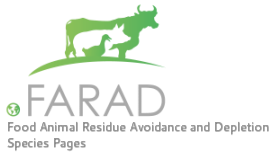Pharmacists and the Food Animal
Pharmacists are becoming more involved in dispensing medications for animals, including food producing animals. The educational curriculum for a pharmacist often does not include training for veterinary patients. The following provides important information for a pharmacist dispensing medications for food-producing animals.
|
|
|
